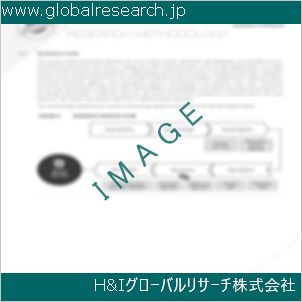Table of Contents
1 Industry Overview of Indium Tin Oxide
1.1 Definition and Specifications of Indium Tin Oxide
1.1.1 Definition of Indium Tin Oxide
1.1.2 Specifications of Indium Tin Oxide
1.2 Classification of Indium Tin Oxide
1.3 Applications of Indium Tin Oxide
1.3.1 Nuclear Application
1.3.2 Non-Nuclear Application
1.4 Industry Chain Structure of Indium Tin Oxide
1.5 Industry Overview and Major Regions Status of Indium Tin Oxide
1.5.1 Industry Overview of Indium Tin Oxide
1.5.2 Global Major Regions Status of Indium Tin Oxide
1.6 Industry Policy Analysis of Indium Tin Oxide
1.7 Industry News Analysis of Indium Tin Oxide
2 Manufacturing Cost Structure Analysis of Indium Tin Oxide
2.1 Raw Material Suppliers and Price Analysis of Indium Tin Oxide
2.2 Equipment Suppliers and Price Analysis of Indium Tin Oxide
2.3 Labor Cost Analysis of Indium Tin Oxide
2.4 Other Costs Analysis of Indium Tin Oxide
2.5 Manufacturing Cost Structure Analysis of Indium Tin Oxide
2.6 Manufacturing Process Analysis of Indium Tin Oxide
3 Technical Data and Manufacturing Plants Analysis of Indium Tin Oxide
3.1 Capacity and Commercial Production Date of Global Indium Tin Oxide Major Manufacturers in 2023
3.2 Manufacturing Plants Distribution of Global Indium Tin Oxide Major Manufacturers in 2023
3.3 R&D Status and Technology Source of Global Indium Tin Oxide Major Manufacturers in 2023
3.4 Raw Materials Sources Analysis of Global Indium Tin Oxide Major Manufacturers in 2023
4 Capacity, Production and Revenue Analysis of Indium Tin Oxide by Regions, Types and Manufacturers
4.1 Global Capacity, Production and Revenue of Indium Tin Oxide by Regions 2019-2024
4.2 Global and Major Regions Capacity, Production, Revenue and Growth Rate of Indium Tin Oxide 2019-2024
4.3 Global Capacity, Production and Revenue of Indium Tin Oxide by Types 2019-2024
4.4 Global Capacity, Production and Revenue of Indium Tin Oxide by Manufacturers 2019-2024
5 Price, Cost, Gross and Gross Margin Analysis of Indium Tin Oxide by Regions, Types and Manufacturers
5.1 Price, Cost, Gross and Gross Margin Analysis of Indium Tin Oxide by Regions 2019-2024
5.2 Price, Cost, Gross and Gross Margin Analysis of Indium Tin Oxide by Types 2019-2024
5.3 Price, Cost, Gross and Gross Margin Analysis of Indium Tin Oxide by Manufacturers 2019-2024
6 Consumption Volume, Consumption Value and Sale Price Analysis of Indium Tin Oxide by Regions, Types and Applications
6.1 Global Consumption Volume and Consumption Value of Indium Tin Oxide by Regions 2019-2024
6.2 Global and Major Regions Consumption Volume, Consumption Value and Growth Rate of Indium Tin Oxide 2019-2024
6.3 Global Consumption Volume and Consumption Value of Indium Tin Oxide by Types 2019-2024
6.4 Global Consumption Volume and Consumption Value of Indium Tin Oxide by Applications 2019-2024
6.5 Sale Price of Indium Tin Oxide by Regions 2019-2024
6.6 Sale Price of Indium Tin Oxide by Types 2019-2024
6.7 Sale Price of Indium Tin Oxide by Applications 2019-2024
6.8 Market Share Analysis of Indium Tin Oxide by Different Sale Price Levels
7 Supply, Import, Export and Consumption Analysis of Indium Tin Oxide
7.1 Supply, Consumption and Gap of Indium Tin Oxide 2019-2024
7.2 Global Capacity, Production, Price, Cost, Revenue, Supply, Import, Export and Consumption of Indium Tin Oxide 2019-2024
7.3 USA Capacity, Production, Price, Cost, Revenue, Supply, Import, Export and Consumption of Indium Tin Oxide 2019-2024
7.4 EU Capacity, Production, Price, Cost, Revenue, Supply, Import, Export and Consumption of Indium Tin Oxide 2019-2024
7.5 China Capacity, Production, Price, Cost, Revenue, Supply, Import, Export and Consumption of Indium Tin Oxide 2019-2024
7.6 Japan Capacity, Production, Price, Cost, Revenue, Supply, Import, Export and Consumption of Indium Tin Oxide 2019-2024
8 Major Manufacturers Analysis of Indium Tin Oxide
8.1 Manufacturer One
8.1.1 Company Profile
8.1.2 Product Picture and Specifications
8.1.2.1 Type I
8.1.2.2 Type II
8.1.2.3 Type III
8.1.3 Capacity, Production, Price, Cost, Gross and Revenue
8.1.4 Contact Information
8.2 Manufacturer Two
8.2.1 Company Profile
8.2.2 Product Picture and Specifications
8.2.2.1 Type I
8.2.2.2 Type II
8.2.2.3 Type III
8.2.3 Capacity, Production, Price, Cost, Gross and Revenue
8.2.4 Contact Information
8.3 Manufacturer Three
8.3.1 Company Profile
8.3.2 Product Picture and Specifications
8.3.2.1 Type I
8.3.2.2 Type II
8.3.2.3 Type III
8.3.3 Capacity, Production, Price, Cost, Gross and Revenue
8.3.4 Contact Information
8.4 Manufacturer Four
8.4.1 Company Profile
8.4.2 Product Picture and Specifications
8.4.2.1 Type I
8.4.2.2 Type II
8.4.2.3 Type III
8.4.3 Capacity, Production, Price, Cost, Gross and Revenue
8.4.4 Contact Information
8.5 Manufacturer Five
8.5.1 Company Profile
8.5.2 Product Picture and Specifications
8.5.2.1 Type I
8.5.2.2 Type II
8.5.2.3 Type III
8.5.3 Capacity, Production, Price, Cost, Gross and Revenue
8.5.4 Contact Information
…
9 Marketing Trader or Distributor Analysis of Indium Tin Oxide
9.1 Marketing Channels Status of Indium Tin Oxide
9.2 Traders or Distributors with Contact Information of Indium Tin Oxide by Regions
9.3 Ex-work Price, Channel Price and End Buyer Price Analysis of Indium Tin Oxide
9.4 Regional Import, Export and Trade Analysis of Indium Tin Oxide
10 Industry Chain Analysis of Indium Tin Oxide
10.1 Upstream Major Raw Materials Suppliers Analysis of Indium Tin Oxide
10.1.1 Major Raw Materials Suppliers with Contact Information Analysis of Indium Tin Oxide
10.1.2 Major Raw Materials Suppliers with Supply Volume Analysis of Indium Tin Oxide by Regions
10.2 Upstream Major Equipment Suppliers Analysis of Indium Tin Oxide
10.2.1 Major Equipment Suppliers with Contact Information Analysis of Indium Tin Oxide
10.2.2 Major Equipment Suppliers with Product Pictures Analysis of Indium Tin Oxide by Regions
10.3 Downstream Major Consumers Analysis of Indium Tin Oxide
10.3.1 Major Consumers with Contact Information Analysis of Indium Tin Oxide
10.3.2 Major Consumers with Consumption Volume Analysis of Indium Tin Oxide by Regions
10.4 Supply Chain Relationship Analysis of Indium Tin Oxide
11 Development Trend of Analysis of Indium Tin Oxide
11.1 Capacity, Production and Revenue Forecast of Indium Tin Oxide by Regions and Types
11.1.1 Global Capacity, Production and Revenue of Indium Tin Oxide by Regions 2024-2029
11.1.2 Global and Major Regions Capacity, Production, Revenue and Growth Rate of Indium Tin Oxide 2024-2029
11.1.3 Global Capacity, Production and Revenue of Indium Tin Oxide by Types 2024-2029
11.2 Consumption Volume and Consumption Value Forecast of Indium Tin Oxide by Regions, Types and Applications
11.2.1 Global Consumption Volume and Consumption Value of Indium Tin Oxide by Regions 2024-2029
11.2.2 Global and Major Regions Consumption Volume, Consumption Value and Growth Rate of Indium Tin Oxide 2024-2029
11.2.3 Global Consumption Volume and Consumption Value of Indium Tin Oxide by Types 2024-2029
11.2.4 Global Consumption Volume and Consumption Value of Indium Tin Oxide by Applications 2024-2029
11.3 Supply, Import, Export and Consumption Forecast of Indium Tin Oxide
11.3.1 Supply, Consumption and Gap of Indium Tin Oxide 2024-2029
11.3.2 Global Capacity, Production, Price, Cost, Revenue, Supply, Import, Export and Consumption of Indium Tin Oxide 2024-2029
11.3.3 USA Capacity, Production, Price, Cost, Revenue, Supply, Import, Export and Consumption of Indium Tin Oxide 2024-2029
11.3.4 EU Capacity, Production, Price, Cost, Revenue, Supply, Import, Export and Consumption of Indium Tin Oxide 2024-2029
11.3.5 China Capacity, Production, Price, Cost, Revenue, Supply, Import, Export and Consumption of Indium Tin Oxide 2024-2029
11.3.6 Japan Capacity, Production, Price, Cost, Revenue, Supply, Import, Export and Consumption of Indium Tin Oxide 2024-2029
12 New Project Investment Feasibility Analysis of Indium Tin Oxide
12.1 New Project SWOT Analysis of Indium Tin Oxide
12.2 New Project Investment Feasibility Analysis of Indium Tin Oxide
13 Conclusion of the Global Indium Tin Oxide (CAS 50926-11-9) Industry 2024 Market Research Report
| ※参考情報 インジウムスズ酸化物(ITO)は、化学式 In2O3:Sn で表される酸化物であり、主にインジウムとスズを含む化合物です。ITOは、その特異な物質的特性から、多くの産業で利用されている重要な材料です。 まず、ITOの基本的な特徴について説明します。ITOは透明導電性を持つ材料として知られており、可視光線を透過する一方で、電気的に導電性を持つ特性があります。この透明導電膜は、主にガラスやプラスチックなどの基材の上に形成され、光を透過しながら電気を通すことが可能です。ITOは、特に光学的および電子的な特性が優れているため、様々な用途で利用されています。 種類としては、ITOは主にその組成により分類されます。スズの含有量によって異なる電気的特性を示し、通常は1%から10%の範囲でスズを含むことが多いです。この含有率によって、ITOの導電性や透明性が変化します。例えば、スズを多く含む場合はより高い導電性を示し、一方でスズの含有量が少ないとより透明性が高まる傾向があります。 ITOの用途は非常に広範囲にわたります。最も一般的な利用分野は、液晶ディスプレイ(LCD)や有機EL(OLED)ディスプレイの中間層として使用されることです。これらのディスプレイは、ITOを用いることで高い透明性と優れた電気的性能を持ちながら、コンパクトなデザインの実現に寄与しています。また、タッチパネルにおいてもITOは重要な役割を果たしています。ユーザーの触れた位置を正確に感知し、タッチインターフェイスの実現に寄与しています。 さらに、ITOは太陽光発電パネルにおいても利用されています。特に薄膜太陽電池においては、ITOが透明な導電膜として使用されることで、光を効率的に取り込むことが可能になります。また、センサー技術やバイオエレクトロニクス分野でもITOはその導電性と透明性を活かして多くの応用が模索されています。 関連技術としては、ITOの製造プロセスや加工技術も重要な要素です。ITO薄膜は、スパッタリングや蒸着法によって基板上に形成されます。これらの技術は、膜の均一性や厚さを精密に制御するために必要不可欠です。また、ITO膜の特性を向上させるための新しい材料との複合化や、ナノテクノロジーの応用も進められています。これにより、ITOの特性を更に引き出し、新しい機能性デバイスの開発が期待されています。 環境への影響については、ITOの製造にはインジウムが使用されるため、供給の安定性が懸念されています。インジウムの主要供給源は限られており、今後の需給バランスが重要な課題となっています。そのため、代替材料の開発やリサイクル技術の向上が急務とされています。特に、環境負荷を低減する視点から、より持続可能な材料や製造プロセスの研究が進んでいます。 ITOは、現代のテクノロジー社会において欠かせない材料であり、その高い透明導電性のおかげで多くの電子機器やディスプレイ技術に応用されています。今後の展望としては、さらなる性能向上や新たな用途の開発が期待されており、持続可能な資源の利用や生産方法の革新が進むことで、より一層の発展が図られるでしょう。このように、ITOは今後もさまざまな分野での活躍が期待される重要な材料であることは間違いありません。 |
❖ 免責事項 ❖
http://www.globalresearch.jp/disclaimer

-gr.jpg)










